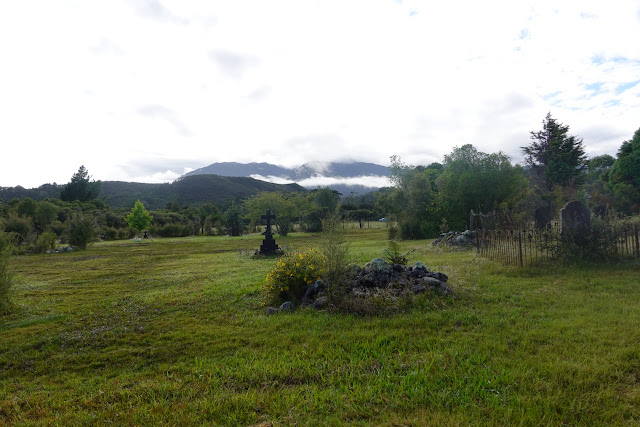Beulah was born in 1906, the second child born to Jane Masciorini of Goldsborough. Her birth registration has not yet been found, but on her death certificate her date of birth was stated as 10 August 1906.
Beulah had an older brother, John Antonio Masciorini, born in 1905, (1905/11188). However, John died at 19 weeks of age (1905/3648).
Her mother, Jane Masciorini, married Joseph Scetrini (son of Giuseppe senior) in 1908. (1908/4822).
Beulah had a close association with the Scettrini family, and in particular with Joseph Benada Scettrini. However, it appears that Joseph was her stepfather, as there is an entry for 1906 in the NZSG Illegitimacies collection where her mother Jane Masciorini was granted maintenance from a different man.
We see an early photo of Beulah at Goldsborough School in 1912 , and in a version of this photo from the Peter Tinetti Collection, we see her name handwritten as Beulah Cetterini. (from West Coast South Island History FB group- using a search for Goldsborough.)
Beulah’s mother Jeannie Scettrini died on 6 October 1919 at Otira, aged only 33 years old.
The funeral left Greymouth by train for the Stafford Cemetery, where Jeanie was interred on 9 October 1919. On her death registration there was a Coroner’s Verdict recorded: “That deceased died from Syncope brought about about by alcoholic gastritis”.
Beulah was only 18 years old when she married David Joseph Yorwarth on 23 February 1925 in the Presbyterian Church in Greymouth. Her birthplace was recorded as Reefton. Only her mother’s name is listed, on her marriage registration - Jane Andrietta Mascorini- with the space for her father’s name left blank. David was 23 years old, born in Ross, and a motor mechanic.
Within just six years Beulah and David had had
five children, one stillborn:-
Coleen Angelica (1925); William
David (1927); Beulah Jean (1928); Stillborn (1930); and
Betty Josephine (1931).
From the electoral rolls we can see that in 1928 Beulah Yorwarth is listed as living in Marlborough St, Greymouth. David Yorwarth is listed with the address of 110 Tainui Street, Greymouth, with the occupation of mechanic. (Perhaps this is a business address?)
In the 1931 roll, both Beulah and David are listed at the same addresses as in 1928, but it would seem that Beulah separates from David this year, as she also appears in the 1931 Supplementary roll for Motueka, with her details given as: Yorwarth, Beulah Jane, Gowan Bridge, married.
Beulah remains living at Gowan Bridge for many years. She appears in the 1943 roll with the same details. And in fact both Beulah Yorwarth and Joseph Beneda Scetrini are listed as living in Gowanbridge on the electoral roll until 1966 when Joseph dies, aged 90.
In the 1938 Wise’s Post Office Directory in the listing for Gowan Bridge we see both Yarworth Buelah and Scetrini Jos B listed. There is also a listing for the store keepers Percy and Ralph Diserens.
This is a map showing where Gowan Bridge is, not far from the Kawatiri turnoff. Both Joseph and Beulah are listed as living here until 1966 when he died. Joseph was living near here in 1928 when building the railway at Pikomanu, while Beulah first appeared here on the electoral roll in 1931.
Near the Kawatiri junction, there is the Kawatiri
Historic Railway Walk, which is apparently a short easy walk that goes through
a tunnel.
Although
it appears that Joseph Beneda Scettrini was Beulah’s step-father rather than
her biological one, they clearly had a close bond over many years. When Joseph
died in 1966, it is stated on his death registration, that he had one female
living issue.
In the death notice that was placed in a Nelson paper for Joseph, it is listed that he was the ‘beloved husband of the late Jane Scetrini of Gowan Bridge, formerly of Otira, and loved father of Beulah (Mrs B J Yorwarth, Gowan Bridge.)'
He was also
listed as the grandfather of eight grandchildren:
Colleen (Mrs Granger, Stoke). Jean (Mrs D. James, Picton). Betty (Mrs E Blain, Nelson)
Nola (Mrs N Yanko, Auckland). Dorothy (Mrs A Bradley, Murchison). Sandra (Gowan Bridge)
William (Huntly). Neville (Murchison). And also as Great-grandfather of 18, and Grt-grt-grandfather of 2.
After Joseph died, Beulah moved into Nelson. In 1969 her address was listed as 26 D’Arcy St, Richmond, and she was listed as a widow.













































